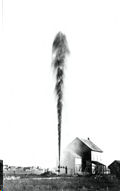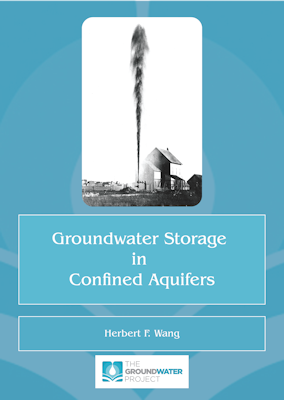Underground aquifers are the water source for 70% of the world’s irrigation use. Many of these aquifers have experienced steep drops in water pressure and are endangered from over consumption. For example, the figure below shows groundwater spewing from an artesian well that was drilled in 1888 in Woonsocket, South Dakota, USA. Initial wellhead pressure was 250 psi (1.7 MPa), dropping to 35 psi (0.25 MPa) by 1923 (Meinzer and Hard, 1925).

The invisibility of groundwater means its management depends on understanding the geological setting and physics of water extraction. This book provides a historical introduction to the discovery of the role of aquifer deformation in response to large-scale pumping in confined aquifers. Many of these discoveries were made by scientists at the United States Geological Survey beginning in the 1890s, which were focused on studies of the Dakota aquifer. Important milestones in the investigations are: the field observations of the hydrogeologic system (Darton, 1896, 1901, 1909); establishment of the connection between aquifer deformation and pore fluid withdrawal (Meinzer, 1928); development of a mathematical solution describing the changes of hydraulic head within the aquifer in response to a pumping well by analogy to heat flow (Theis, 1935); and finally, the derivation of the time dependent governing equation for groundwater movement in terms of aquifer and water compressibility (Jacob, 1940).
These benchmark papers weave together threads from hydrogeology, geomechanics, and petroleum engineering with binding stitches from mathematics and physics. Specific storage is one of the two aquifer properties (hydraulic conductivity is the other) appearing in the groundwater flow equation. Going behind the scenes of its discovery can provide the groundwater scientist a deeper conceptual understanding than is readily apparent from its definition as “the volume of water that a unit volume of aquifer releases from storage per unit aquifer volume under a unit decline in hydraulic head” (e.g., Freeze and Cherry, 1979).
The source of citations in this brief description are provided in the reference list of the book.

